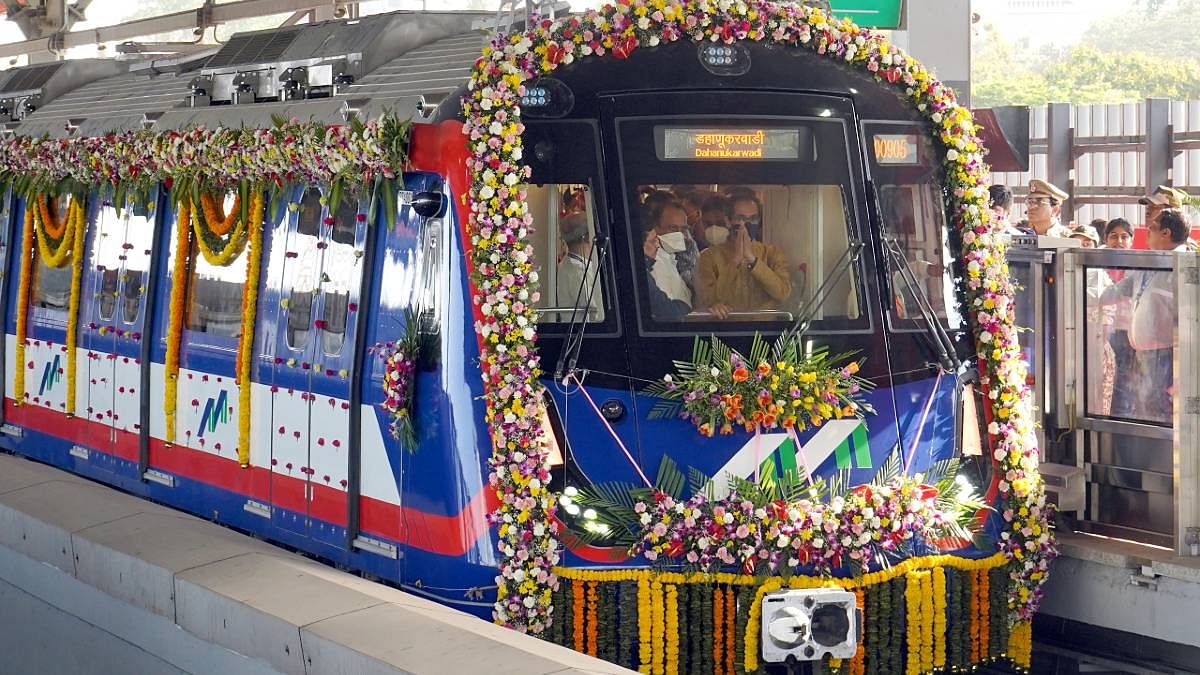Mumbai Set to Witness Partial Inauguration of Metro 3 by Prime Minister Narendra Modi
Mumbai’s long-awaited Metro 3 project, the city’s first underground metro, is set to see its partial inauguration next month by Prime Minister Narendra Modi. The event will mark a significant milestone for Mumbai’s transportation network as it embarks on a new phase of urban mobility. The Aqua Line, as it is known, will open its first phase, covering a 12-kilometer stretch between Aarey Colony and the Bandra Kurla Complex (BKC). This crucial section will provide much-needed relief to commuters, offering an alternative to Mumbai’s congested roads and local train network.
The inaugural 12-kilometer stretch of the Aqua Line is expected to feature 10 operational stations between Aarey Colony and BKC. This will be part of the larger Metro 3 corridor, which is 33.5 kilometers in length and is expected to be fully operational by March 2025. Upon completion, the corridor will include a total of 27 stations, linking Mumbai’s western, central, and southern parts.

The metro will operate from 6:30 AM to 10:30 PM on weekdays, with slightly altered timings on weekends, running from 8:30 AM to 10:30 PM. The line will be supported by nine rakes, providing 96 trips daily, with each eight-car train expected to carry approximately 2,500 passengers. Additionally, the trains are designed to be capable of driverless operations, though initially, 48 train captains will be on board to operate the service.
This phase of the Aqua Line will ease travel for a significant portion of Mumbai’s workforce, especially those commuting between business hubs like BKC and the suburbs. Moreover, it will offer direct connections to both domestic and international airports, enhancing the city’s transportation infrastructure and reducing travel times.
PM Modi’s Broader Inauguration Plans
Prime Minister Modi’s visit to Mumbai will not be limited to the partial inauguration of Metro 3. According to reports, he will also be launching several other key infrastructure projects across Maharashtra. These include the opening of one section of the Thane Creek Bridge and the final phase of the Samruddhi Expressway, which will connect Mumbai to Nagpur. Additionally, the Prime Minister is expected to lay the foundation for the ambitious Thane Ring Metro project, further boosting connectivity in the Mumbai Metropolitan Region (MMR).

The partial inauguration of the Aqua Line is expected to have a significant impact on daily commuting in Mumbai. It will provide seamless connections to key areas such as Santacruz, Marol, and Ghatkopar. The line will serve as an alternative to the often overcrowded local trains and reduce the strain on the city’s overburdened road network.
Key areas along the Aqua Line include Nariman Point, Mumbai Central, Worli, Dadar, and a direct connection to Mumbai’s Chhatrapati Shivaji International Airport. Once fully operational, the Aqua Line will integrate southern Mumbai with the city’s suburban regions, offering faster and more convenient transport options for commuters. It will also contribute to reducing the city’s notorious traffic congestion, particularly in high-density areas such as the western suburbs.
Metro 3 Fare Structure
Although the fare structure for the Aqua Line has not yet been officially confirmed, it is expected to follow a similar range as Mumbai’s existing metro lines. Based on the current pricing for other metro routes, the estimated fare structure is as follows:
– 0-3 km: ₹10
– 3-12 km: ₹20
– 12-18 km: ₹30
– 18+ km: ₹40 or more
Initially, passengers will be issued paper tickets featuring QR codes, with plans to gradually roll out National Common Mobility Cards (NCMC) for seamless travel across different modes of public transport.

The Aqua Line’s journey to completion has been met with multiple challenges and delays. Originally slated for completion in 2021, the project faced significant setbacks, particularly surrounding the construction of the Aarey car depot. Environmental concerns led to protests and legal battles, as activists and citizens expressed worries about the depot’s impact on Aarey’s green cover. This controversy delayed construction, pushing the project timeline back by several years.
Slow progress from contractors and the pandemic also contributed to the delays. Despite these obstacles, the completion of the first phase marks a crucial step forward for the city’s transportation network.
Mumbai Metro Network Expansion
The Aqua Line is part of a much broader vision to enhance Mumbai’s public transportation system. The city’s metro network is expanding rapidly, with 14 planned metro lines designed to alleviate traffic congestion and improve connectivity. Some of the key metro lines include:

– Line 1 (Blue Line): Mumbai’s first metro line, connecting Versova, Andheri, and Ghatkopar.
– Line 2A (Yellow Line): Partially operational, connecting Dahisar (East) to DN Nagar.
– Line 4 (Green Line): Running between Wadala and Kasarvadavali, improving central Mumbai’s connectivity.
– Line 5 (Orange Line): Connecting Thane, Bhiwandi, and Kalyan.
– Line 6 (Pink Line): Linking Lokhandwala to Kanjurmarg for better east-west connectivity.
– Line 7 (Red Line): Operational between Dahisar (East) and Gundavali.
– Airport Connector (Line 8): A proposed line connecting Mumbai’s existing and new international airports.
These metro lines will revolutionize commuting in Mumbai, offering a viable alternative to road travel and supporting the city’s growing population and economic activities.
The partial opening of the Aqua Line is a key step toward fulfilling Mumbai’s transportation goals. Once fully operational, it will be a game-changer for the city, providing residents with more reliable, efficient, and eco-friendly transport options. With the inauguration of Metro 3 and other infrastructure projects, Mumbai is positioning itself as a city with a robust urban transport system to meet the demands of the future.
As Prime Minister Modi inaugurates this important phase of the project, Mumbai’s commuters will soon reap the benefits of faster, more convenient travel across the city. The Aqua Line is not just a new metro route—it is a symbol of Mumbai’s evolving urban landscape and its commitment to modernizing public transport.

